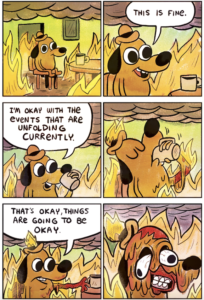
I was struck by the section in this week’s reading about Jennifer Price and her view that “…the connections to nature are highly mediated.” (Fallan 2017: 104) Further to that statement, the work of William Rollins and his reflections on the SUV. Coming from the United States, I can see these views clearly… now. The US has such an extreme materialistic culture that you have to try very hard to separate need from want and what you might think of as “sustainable” from marketing “ideology” as Rollins says. (Fallan 2017: 105)
For the past two years I have been “eyeing” Rivian, an all-electric truck company. Built in Detroit Michigan, Rivian trucks have a clientele seeking adventure in an environmentally friendly way. At face value this seems pretty great. The trucks are beautiful (to me) and have a ruggedness and capability exceeding anything currently on the market. I feel like purchasing a Rivian is making a statement that I care about the environment and wish to perpetuate a move away from fossil fuels. While this is true, stepping outside of my American consumer mentality forces me to view this product and need more critically.
The paradox of the SUV as stated by Rollins is not solved by the move to electric. This may solve the issue of emissions but does little to account for the environmental impact of the Lithium mining for the batteries or the energy consumption from a plant generating power from natural gas or worse, coal.
One facet of the American consumer mentality that is prevalent across industries is the idea that behavior is a constant and thus special products are required to aid whatever behavior I exhibit. In the case of the SUV the behavior is that I want to drive a large vehicle with room for all of the items that are needed for the many activities I associate with my personality. I also want to have the ability to drive to remote areas and really be “a part of nature”. (Fallan 2017: 105) The paradox Rollins mentioned is quite funny and surprising that such a simple statement can leave such an impression. The issue is that we’re conditioned to never ask whether or not we need to carry so much cargo or be able to drive off-road, wherever we feel like going.
In terms of behavior modification for more conscious consumerism, getting the public to determine need from want would be great first step. I still want a Rivian, but I also want to be sure that I am paying adequate attention to whether or not the need carries adequate weight in the decision making process. Until then I hope to assess my own behaviors against Price and Rollins’ ideas on the intersection of the environment and things.
Fallan, Kjetil, Jørgensen, Finn Arne. (2017) ‘Environmental Histories of Design: Towards a New Research Agenda’. Journal of Design History, 30 (2), 103-121


